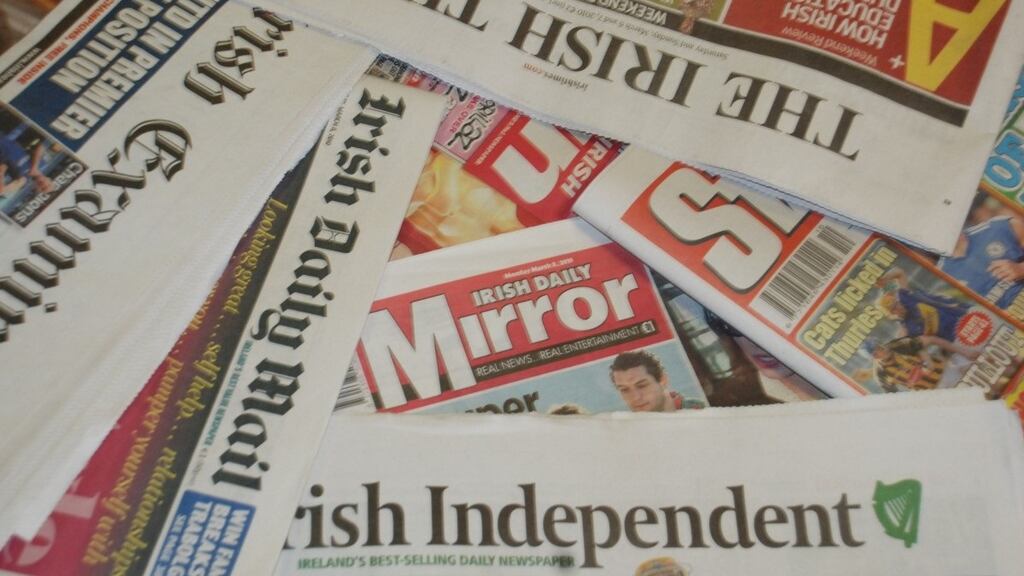Robert Pitt, chief executive of Independent News & Media (INM), said an interesting thing at its last press briefing: despite the difficulties the industry is facing in "keeping the newspaper category alive", he would "much rather be a print publisher with a digital arm than just a digital start-up".
Looking purely at revenue, the statement is to be expected. In 2015, INM collected €12.5 million from digital advertising and almost all of the rest of its €321 million in annual revenue from the business of newspapers and printing.
If it was a digital start-up, INM would be a tiny company today, a mere minnow compared with its current size, which is, in turn, much smaller than the international media empire it controlled at its corporate peak.
But revenue does not tell the whole story. Newspapers and printing may generate the bulk of INM’s income, but they also account for a great deal of its €283 million in costs. And digital revenue, though small, is on an upward curve, while print revenue has already shrunk from a once great height.
This, as has been known for years now, creates profound headaches for how media groups organise themselves and plan for the future. Should they continue to support their biggest assets – print newspapers – in the name of extending their life for as long as possible? Or should they concentrate their efforts on websites and apps, despite long-term uncertainty about the place of their brand in a market stalked by behemoths such as Google and Facebook?
Where should the balance of resources fall between print and digital this year, next year and in five years’ time?
Typically, however, the debate is predicated on media groups’ websites and newspapers remaining within the same organisation. This might not always be the case. The trend over the last decade has been for news titles to knock down the operational walls between its print and digital activities in editorial and sales. But the next decade could see a reversal.
The Daily Mail and General Trust, the conglomerate that owns MailOnline and Daily Mail publisher DMG Media, is one of the parties said to have a glint in its eye at the carve-up of the languishing Yahoo. This throws up the vision of a MailOnline allied to media properties such as Yahoo News and the company's advertising technology platforms.
Where would the Daily Mail and Mail on Sunday newspapers fit in this scaled-up digital business? Might the print publishing end of DMG Media have a different fate than MailOnline? From the beginning the company was keen to cultivate its global online brand separately from its UK-based print one (even more so in Ireland, where it lives online as Evoke.ie).
The divorce between the Evgeny Lebedev-owned ESI Media's Independent and its sister title, the i newspaper, points to a possible outcome for other news media groups.
The relationship between the now online-only London Independent, still owned by Lebedev, and the i, which was sold to Johnston Press, was not severed completely. The Independent's journalism is still published by the i under a three- year syndication deal, and the two titles "will co-operate on stories".
This agreement highlights that there is no inherent need for digital and print products that originated in the same company to be housed within the same corporate structure forever. Content can always be supplied or bought from one to the other via syndication.
Today, it is not uncommon for news groups’ dual-product focus to create operational angst, as its journalists and sales teams juggle two quite distinct sets of styles, formats, production requirements and consumer needs – and, very often, different audiences.
The editorial context of newspaper articles may be lost when they appear online, while the process of translating popular digital media genres to print can get a bit silly. The floor between the two stools is littered with content that made sense in one format but not the other.
When Pitt said he would rather INM was a straddler of both print and digital than a digital start-up with no brand history, he was not only referencing the value of the print business, he was signalling that he was up for the challenge of transitioning INM to digital.
But it isn’t simply a case of waiting for the newer pot of money to swell over time and hoping it does so more quickly than the older pot whittles away. The only way to bridge the gap between digital and print advertising revenue, as he saw it, was to buy up digital companies: mergers and acquisitions. Across the industry, the next phase of interventions may then be spin-offs and disposals.










